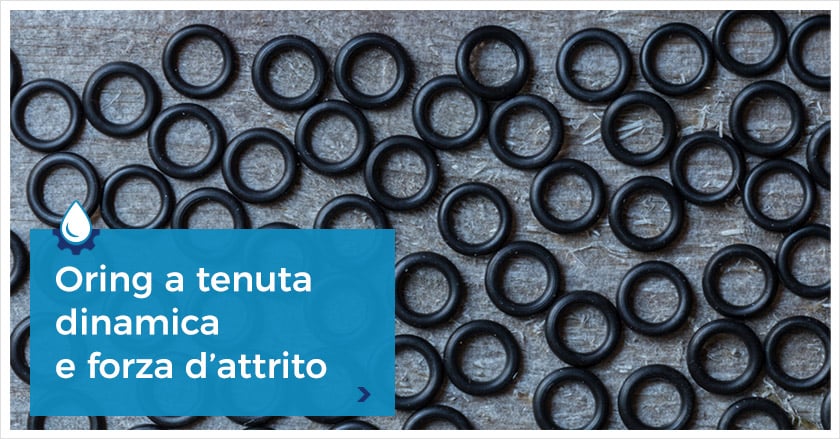
O-ring with dynamic seal and friction force
Compared to the static varieties, dynamic rubber O-rings are subjected to a higher mechanical stress. Since they are inserted between 2 moving parts, the risk of wear is far greater. Choosing the right lubricant is thus even more important.
Rubber O-rings: function and applications
The O-ring is the sealing device par excellence, capable of satisfying numerous needs and sectors.
A rubber O-ring is a band of elastomer with a circular profile, designed to be inserted into a suitable housing and compressed during the assembly of two or more parts. This compression increases with rising pressure, helping to improve the sealing effect.
Like most seals, a rubber O-ring is used in many situations of different nature in which it is in contact with liquid, solid and gaseous combinations.
They are also made with multiple compounds, in different sizes and hardnesses, hence why it is necessary to use a lubricant specifically designed for their characteristics to ensure maximum performance in terms of duration and performance.
To what extent? Let's see it together!
Dynamic rubber O-rings and frictional force
When it comes to dynamic seal rubber O-rings, one very important factor affecting the quality of the seal and gasket is the frictional force.
The premise is the value of the friction coefficient between dynamic rubber O-rings and components is high but an adequate lubricant between the wall and gasket certainly contributes to its reduction, in quite a significant way.
Dynamic applications can be divided into two main types, depending on whether the seal is for liquids or gases:
- For the dynamic sealing of liquids, the rubber O-ring adheres to the sealing surfaces with a force, the extent of which depends on the volume of the ring in relation to the dimensions of the groove and the pressure exerted by the fluid
- For dynamic sealing of gas, rather, there is no fluid acting as a lubricant so to resolve this problem, air is used where a certain quantity of lubricating oil is present in suspension, depositing on the rubber O-ring to reduce the friction
Rubber O-rings: the chemical composition
All contact between a rubber O-ring and a lubricating fluid creates a chemical reaction that can have more or less evident effects on the gasket itself. They are distinguished mainly in two effects:
- Swelling, when the base oil of the lubricant and its components are incorporated into the rubber matrix
- Contraction, when some components of the rubber move towards the lubricating fluid
Both of these phenomena can occur for different reasons but it is quite clear that they are unnatural situations in the operation of the machinery and of the gasket, which can also have very serious consequences. Indeed, after coming into contact with the lubricant, a rubber O-ring can undergo important changes, such as:
- Increased hardness
- Increased volume
- Increased weight
- Altered tensile strength
- Elongation at break
Any potential interactions with the fluids or greases used for the assembly or lubrication of the rubber O-rings can destroy your work from the outset, thus you must trust in the experts to help you best complete an evaluation based on your actual needs.



